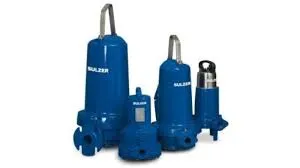Samoan
- Afrikaans
- Albanian
- Amharic
- Arabic
- Armenian
- Azerbaijani
- Basque
- Belarusian
- Bengali
- Bosnian
- Bulgarian
- Catalan
- Cebuano
- Corsican
- Croatian
- Czech
- Danish
- Dutch
- English
- Esperanto
- Estonian
- Finnish
- French
- Frisian
- Galician
- Georgian
- German
- Greek
- Gujarati
- Haitian Creole
- hausa
- hawaiian
- Hebrew
- Hindi
- Miao
- Hungarian
- Icelandic
- igbo
- Indonesian
- irish
- Italian
- Japanese
- Javanese
- Kannada
- kazakh
- Khmer
- Rwandese
- Korean
- Kurdish
- Kyrgyz
- Lao
- Latin
- Latvian
- Lithuanian
- Luxembourgish
- Macedonian
- Malgashi
- Malay
- Malayalam
- Maltese
- Maori
- Marathi
- Mongolian
- Myanmar
- Nepali
- Norwegian
- Norwegian
- Occitan
- Pashto
- Persian
- Polish
- Portuguese
- Punjabi
- Romanian
- Russian
- Samoan
- Scottish Gaelic
- Serbian
- Sesotho
- Shona
- Sindhi
- Sinhala
- Slovak
- Slovenian
- Somali
- Spanish
- Sundanese
- Swahili
- Swedish
- Tagalog
- Tajik
- Tamil
- Tatar
- Telugu
- Thai
- Turkish
- Turkmen
- Ukrainian
- Urdu
- Uighur
- Uzbek
- Vietnamese
- Welsh
- Bantu
- Yiddish
- Yoruba
- Zulu
Telephone: +86 13120555503
Email: frank@cypump.com
Dec . 23, 2024 05:01 Back to list
'design and functionality of a double action suction pump for ...'
Design and Functionality of a Double Action Suction Pump
The double action suction pump is an essential component in various industries, notably in hydraulic systems, aquaculture, and water supply. This type of pump operates by utilizing both the upstroke and downstroke of a piston to draw liquid or gas into the chamber, thereby producing a continuous flow of fluids. This article delves into the design, operational principles, and the practical applications of double action suction pumps.
Design Features
The design of a double action suction pump significantly influences its functionality and efficiency. These pumps typically consist of several key components the cylinder, piston, inlet and outlet valves, driveshaft, and the housing.
1. Cylinder and Piston The cylinder serves as the main chamber where the action of pumping occurs. Within the cylinder, the piston reciprocates, creating a vacuum that facilitates the suction of liquid. The piston is often designed with a durable material to withstand wear and tear from constant movement and contact with the fluid.
2. Inlet and Outlet Valves The operation of the pump relies heavily on one-way valves that are situated at both the inlet and outlet. These valves ensure that fluid enters the chamber when the piston moves downwards (suction stroke) and that it exits when the piston moves upwards (compression stroke). The correct design of these valves is crucial for maintaining efficiency and preventing backflow.
3. Drive Mechanism The drive mechanism can be hydraulic, electric, or mechanical, depending on the application. Electric motors are commonly used in various industrial settings, whereas hydraulic drives might be preferred in environments where power sources are limited.
4. Housing The exterior housing protects the internal components from external environments and serves as a support structure. It can be made from various materials, including stainless steel for corrosion resistance or cast iron for durability.
Functionality
'design and functionality of a double action suction pump for ...'

The double action suction pump operates through two distinct strokes suction and discharge. During the suction stroke, the piston moves downward, creating a negative pressure within the cylinder. This lower pressure causes the inlet valve to open, allowing fluid to enter the chamber. Once the piston reaches its lowest point and begins to move upward, the inlet valve closes, and the outlet valve opens. This upward motion compresses the fluid, pushing it out through the outlet.
This dual-action mechanism allows for a smoother and more consistent flow compared to single-action pumps, which only utilize one stroke per cycle. Moreover, the increased quantity of fluid moved per cycle enhances the overall efficiency and performance of the pump.
Applications
Double action suction pumps find use in a myriad of applications across different sectors. In agricultural practices, they are used for irrigation, effectively drawing water from reservoirs or wells. In municipal water treatment facilities, these pumps are crucial for moving large volumes of water during the purification process.
Additionally, in the oil and gas industry, double action pumps are utilized in the extraction and transportation of crude oil. Their sturdy construction and efficient operation allow them to handle heavy viscous liquids, making them invaluable in this sector.
In aquaculture, the pumps are instrumental in maintaining water quality by facilitating water circulation and aeration in fish tanks and ponds, ensuring a healthy environment for aquatic life.
Conclusion
The double action suction pump is a vital component in many industrial processes, standing out for its efficient operation and versatility. With a robust design featuring durable components and an effective double-stroke action, these pumps offer substantial advantages over their single-action counterparts. Understanding the intricacies of their design and functionality is crucial for engineers and operators alike. As technology advances, the development of more efficient and environmentally friendly pumps continues to be a significant area of focus, further enhancing the importance of double action suction pumps in modern applications.
-
Horizontal Split Case Pump with GPT-4 Turbo | High Efficiency
NewsAug.01,2025
-
ISG Series Pipeline Pump - Chi Yuan Pumps | High Efficiency, Durable Design
NewsAug.01,2025
-
Advanced Flue Gas Desulfurization Pump with GPT-4 Turbo | Durable & Efficient
NewsJul.31,2025
-
ISG Series Vertical Pipeline Pump - Chi Yuan Pumps | Advanced Hydraulic Design&Durable Construction
NewsJul.31,2025
-
ISG Series Vertical Pipeline Pump - Chi Yuan Pumps | Energy Efficient & Low Noise
NewsJul.31,2025
-
pipeline pump - Chi Yuan Pumps Co., LTD.|High Efficiency&Low Noise
NewsJul.31,2025










